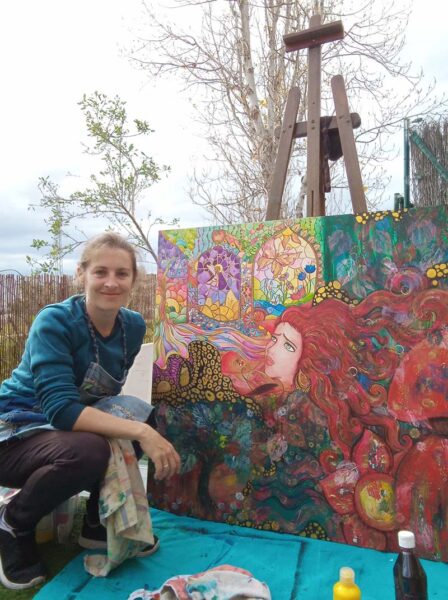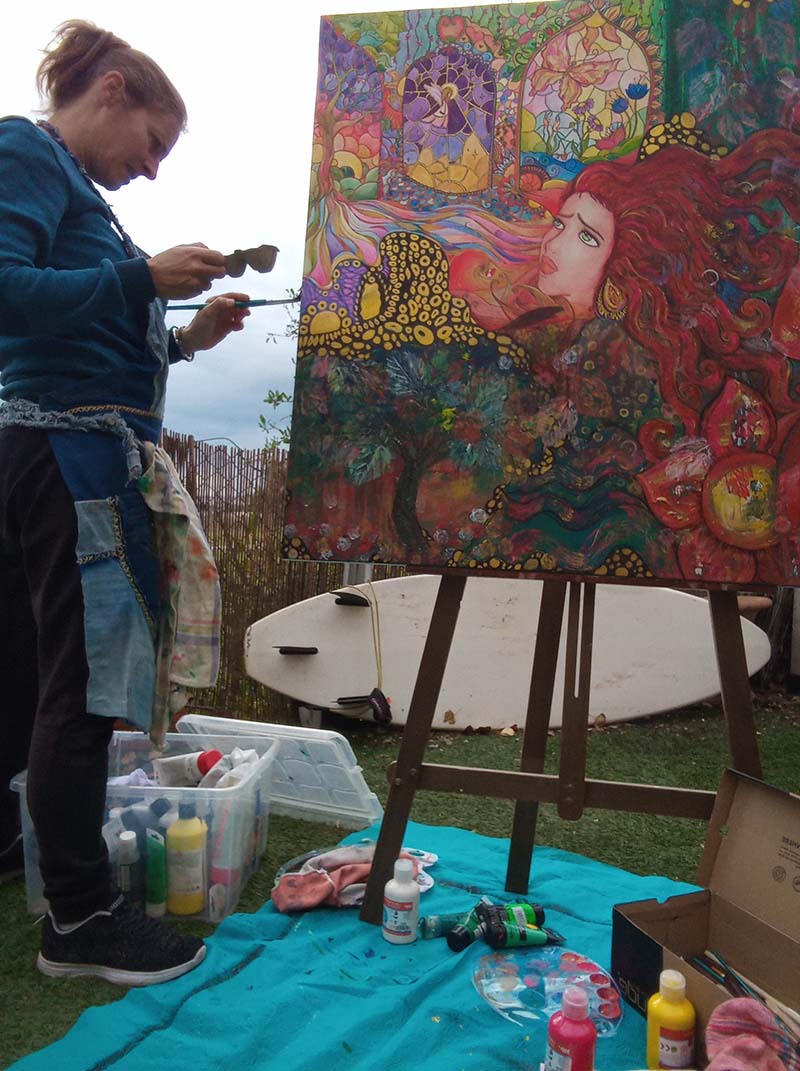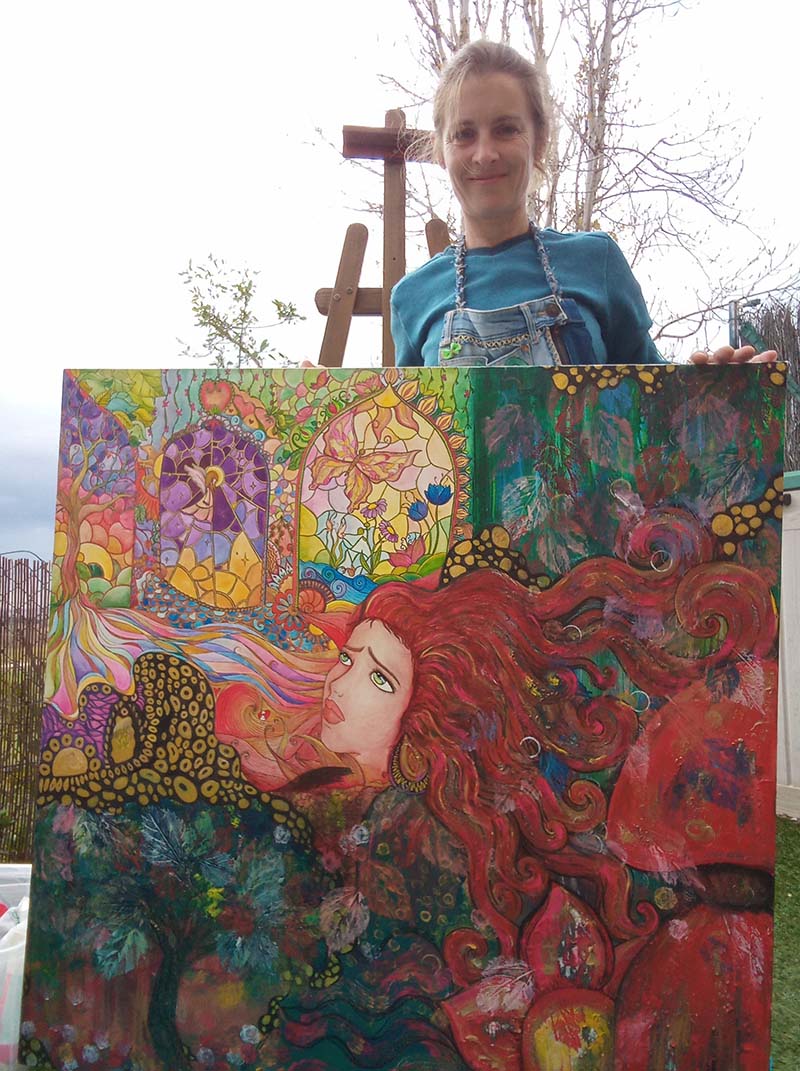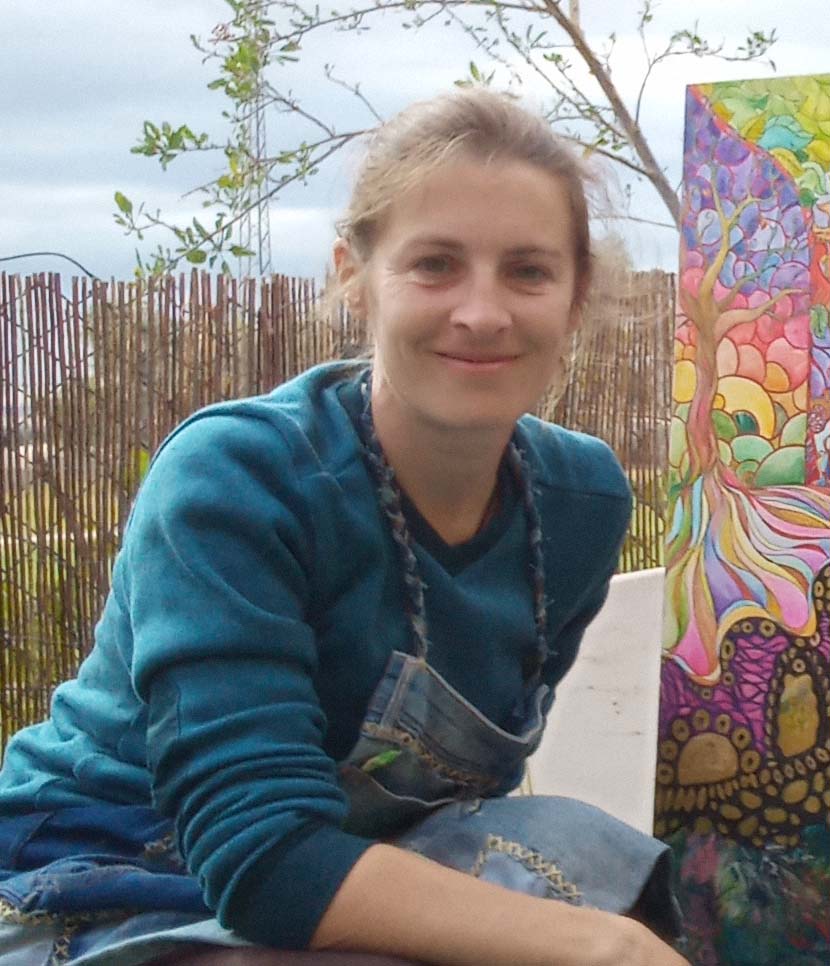
CAROLINE ALMARCHA



Caroline Almarcha (Nice, 1979) has spent half her life traveling for pleasure, studies, or duty, as the daughter of a gendarme. From her early years on the French Riviera, she moved to the Parisian area, only to head back to the south of France at the age of 12. Throughout this journey, she was always accompanied by an overwhelming need to express herself, whether through classical dance, modern jazz, drawing, painting, or even gastronomy. She admired and studied Ernst and Dalí with devotion, but it is Van Gogh who truly fascinates her. If she had to choose one of his works, it would be The Starry Night.
Caroline, to create works brimming with color, charm, and fascination—paintings that evoke an imaginary world—must one always be in a good mood?
Not necessarily! My works are full of colors and light, but they are not born solely from moments of joy. For me, creation is a journey where all emotions have their place. Sometimes, in moments of doubt, melancholy, or reflection, the most vibrant ideas emerge. The bright colors you see in my paintings, such as in Resilience, my latest piece, often reflect a quest: to transform shadow into light. Painting becomes a space for balance, a way to explore and transcend emotions. I believe this contrast between shadow and light, joy and introspection, is what makes my works so alive and universal. Good humor is sometimes present, but it’s not a requirement for creation. What matters is painting sincerely, letting intuition and the soul speak, regardless of mood.
Music, dance, literature, art… they’re therapy for life.
Absolutely. They are forms of expression that transcend words and allow us to release what we feel deep inside. For me, painting is a way to explore my emotions, find inner balance, and transform my experiences—even the darkest ones—into something full of light. When I work on a painting, I feel connected to something greater than myself, as if each brushstroke were a form of meditation, a silent dialogue with the soul. These artistic disciplines are also bridges: they connect us with others. A piece of music can move us, a dance can transport us, a painting can touch us deeply without need for explanation. This universality of art is what makes it so therapeutic: it reminds us that we are human, with our strengths and vulnerabilities. For me, art is much more than a passion or a profession; it’s a way of living and healing, both for myself and for those who receive it.
Do the worlds you imagine in your works take shape beforehand, or do they emerge freely with each brushstroke?
They emerge freely, with each brushstroke. When I start, I don’t have a fixed idea or composition in mind. I let myself be guided by colors, shapes, and, above all, my emotions at the moment. It’s a very intuitive, almost meditative process, where I trust what naturally comes forth. A key part of my creative process is music. Every piece begins with a specific sound atmosphere: I listen to meditative music at frequencies like 432Hz or 963Hz. These vibrations help me center myself and reach an almost contemplative state where inspiration can flow freely. With music, everything feels fluid. It offers me a sense of total freedom, without limits, blocks, or fear of the blank canvas. There’s a silent dialogue between me, the canvas, and the sound vibrations. Sometimes an image or symbol appears, and it’s as if I must listen to it and let it take its place. Every painting is a discovery, an exploration where the unexpected is welcome. For me, this freedom in the process, combined with the energy of music, is essential. It allows me to stay connected to the present moment and create worlds that are not planned but felt. Perhaps that’s what gives my works their dreamlike and universal dimension: they don’t follow a plan; they are born from the heart, intuition, and the sound vibrations that accompany me.
If you traveled to one of your paradises for a few days to paint our world, what colors and shapes would you use to explain to its inhabitants what we have here on Earth?
If I traveled to one of my paradises to paint our world, I would choose colors and shapes that speak of both its beauty and its contrasts. I would start with soft and luminous tones: the deep blue of the oceans, the vibrant green of forests, the golden yellow of wheat fields under the sun. These colors would be fluid, almost liquid, to evoke the vitality and harmony Earth can offer. But I wouldn’t stop there. I’d add touches of intense red to convey the passion and struggles that define humanity. I’d also include areas of shadow and gray to remind us of the storms, doubts, and imbalances of our time.As for shapes, I’d work with organic ones: spirals, curves, and interwoven patterns to show the interconnectedness of all things. But I’d also incorporate broken lines and fragments, as echoes of our world’s fragility. This painting wouldn’t be a realistic representation but rather an emotional and intuitive translation of what Earth is: a place rich in contrasts, where shadow and light coexist, beauty and chaos intertwine, and everything is in perpetual motion. I would want the inhabitants of that paradise to feel, above all, the energy of our world, its resilience, and immense potential, but also the urgency to protect and care for it.
Let’s end with a two-part question. Based on one of your works, choose a writer from any era to publish a poem or novel inspired by the painting. Also, tell me what the soundtrack would be.
For this question, I would choose my work Éclat Divin, a piece that speaks of inner light, transformation, and reconnecting with oneself. If I had to collaborate with a writer, I’d love to work with Khalil Gibran, author of The Prophet. His way of writing about the human soul, spirituality, and universal love resonates deeply with the energy I aim to convey in my work. I imagine a contemplative poem about that universal light we all carry within us—how it sometimes flickers but is always there, ready to shine.
To accompany this collaboration, the soundtrack would be Nuvole Bianche by Ludovico Einaudi. This music has emotional power and depth that perfectly aligns with the dreamlike, introspective atmosphere of Éclat Divin. It invites us to slow down, breathe, and connect with that inner light. I believe the combination of my art, Gibran’s words, and Einaudi’s music would create an immersive experience that speaks directly to the heart and soul of viewers.
What title would you give to the book of your life, written and created by you?
In the Light of Shadows. This title would symbolize my personal journey, full of contrasts between moments of doubt and clarity, chaos and harmony. It would reflect my belief that shadows are not our enemies but essential elements for revealing our inner light. The book would mix life stories, reflections on creation, and poetic fragments inspired by my paintings. Each chapter would invite the reader to delve into their own shadows to discover an unexpected light, listen to their intuition, and let their creativity emerge. In the end, the book of my life wouldn’t be just mine: it would be an invitation for others to write theirs through the colors, emotions, and stories they carry within.
Caroline, whether for family reasons or pure curiosity, much of your life has been spent with just you and a suitcase. If fate gave you no choice but to settle in one place, where would you stay and paint forever?
I would choose the Alhambra in Granada. This place is a treasure of beauty—a perfect blend of history, nature, and light. Every corner, every motif, every reflection seems to tell a timeless story. There’s a particular magic in the harmony between the majestic architecture and the lush gardens, as if the soul of the place breathes through every stone and fountain. For me, the Alhambra embodies an endless source of inspiration. The light dances differently at every hour of the day, illuminating the delicate arabesques and mirrors of water. I imagine my paintings capturing those plays of reflections and subtle contrasts between shadow and light. Painting in the Alhambra would be a deeply spiritual experience. This place invites silence and contemplation, and it seems like the ideal site to reconnect with oneself while paying homage to the world’s beauty.
Paint the canvas of this conversation in three lines.
An invisible canvas where words intertwine like bursts of light. Each exchange, a color; each idea, a shade, forming a landscape of infinite inspiration. Together, we’ve painted a world where creativity is the only boundary.
Caroline, thank you very much for speaking with Target Prize. Wishing you all the best and endless inspiration.
